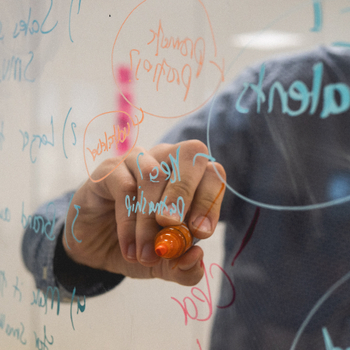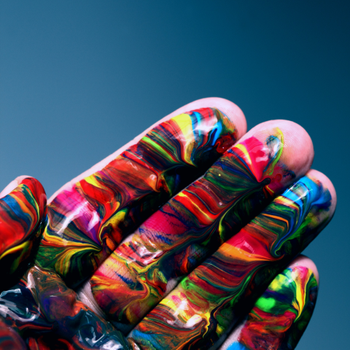Actions
In-VisIBLe project is expected give to all the persons directly or indirectly connected with it the opportunity to foster inclusion in education; promote accessibility to culture and improve HE teaching and learning quality; generate synergies between entities and communities from different countries that currently carry out innovative actions in the field of inclusion.
Which are the actions we want to implement to reach these goals?

1. Building Inclusive Higher Education Systems
The first action of the In-VisiBLe project is to create Innovative and Inclusive Didactic Modules of History of Architecture (IDM) accessible to students with visual disabilities, by using and implementing innovative tools for communication and fruition of cultural contents related to visual arts (i.e. tactile 3D models and plates, artificial intelligence modules relying on visual information to recognize the objects and images surrounding the user, educational tools that can substitute the visual display, text to speech modules).
Most of these tools are already available, but they have not been truly exploited in HE courses. So far they have been generally used in non-academic courses or in educational activities exclusively dedicated to VIB students. Moreover, they are in most cases used singularly, not combined together: thus, the In-VisIBLe project aims at integrating them for the first time into HE courses in History of Architecture.
This will require the development of specific versions of these tools to make the project results accessible to as many people as possible:
Massive Open Online Courses (MOOC) of History of Architecture accessible to visually impaired and blind people (VIB);
- In-VisIBLe Image Captioning Dataset and System;
- In-VisIBLe Teaching & Learning Web Platform where all the project tools/materials/courses are stored and accessible to all;
- Guidelines for the design and realization of 3D architectural models accessible to VIB;
- Guidelines to make architecture and visual arts accessible to VIB.

2. Innovation in Learning & Teaching Practices
The In-VisIBLe project improves both access to cultural contents of people with special needs and the quality and the relevance of HE through an innovative use of digital tools and new technologies, in line with the Digital Education Action Plan (2021-2027).
The aim of the project is to create HE Innovative and Inclusive Didactic Modules (IDM) and Massive Open Online Courses (MOOC) of History of Architecture allowing VIB students to access the university courses attended by their non-disabled peers and, at the same time, enhancing the quality of normally sighted students’ knowledge using innovative teaching tools.
Indeed, these tools are specifically designed to meet the needs of students/users with visual disabilities, but they also facilitate and enrich the learning practice of all potential students/users, while developing their ICT skills and competences, as they:
- Promote the educational approach of the new technologies with greater future projection, i.e. the 3D printing and the use of A.I.
- Contribute to the acquisition of key competences related to the ICTs, developing innovative educational practices
Both HE students and teachers will benefit from the use of new didactic methodologies and tools, and HE institutions and departments will benefit from an increased innovation in teaching and learning approaches.

3. Promotion of Cultural Accessibility
Accessibility is the core of one of the areas of action of the European Disability Strategy 2010-2020 and of the Strategy for the Rights of Persons with Disabilities 2020-2030. Culture is one of the most crucial contexts in which accessibility is declined, because of its centrality in the growth of both the individual and the society.
The Article 24 of the UN Convention on the Rights of Persons with Disabilities provides that “States Parties shall ensure an inclusive education system at all levels and life long learning directed to: a. The full development of human potential and sense of dignity and self-worth, and the strengthening of respect for human rights, fundamental freedoms and human diversity; b. The development by persons with disabilities of their personality, talents and creativity, as well as their mental and physical abilities, to their fullest potential; c. Enabling persons with disabilities to participate effectively in a free society”.
Nevertheless, the level of education of persons with disabilities continues to be largely lower than the one of persons without disabilities. At present, people with disabilities are only represented on average in 1.1% of the university degree students and the percentage is even lower when talking of master, postgraduate or PhD students.
Moreover, during the current COVID-19 pandemic, access to education is proving, more than ever, to be essential to ensuring an effective recovery process, while promoting equal opportunities for all and leaving no-one behind.
The In-VisIBLe project aims at promoting cultural accessibility in Higher Education for people with visual disabilities, by using and implementing innovative tools for communication, teaching and learning. It is expected give to all the persons directly or indirectly connected with it the opportunity to foster inclusion in education, promote accessibility to culture and improve HE teaching and learning quality and innovation. In doing so, cultural accessibility can fulfill its role and become one of the most strategic and effective tools for creating a truly inclusive society.